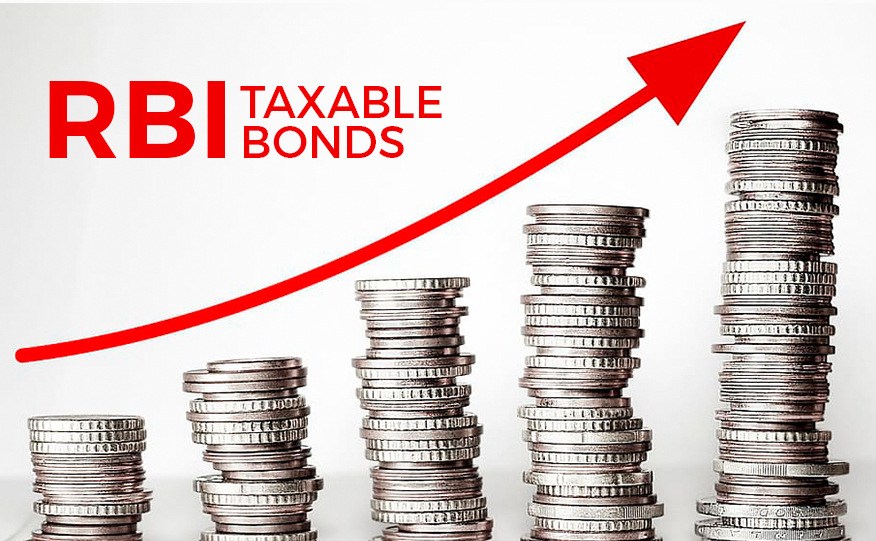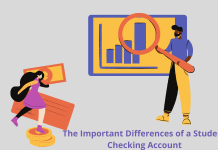Looking for a safe, risk-free investment? Whether you’re looking to live off your investment income or wanting to preserve your capital to avoid major losses in times of crisis, investing in taxable bonds comes as the safest bet.
More than providing you with big and reliable cash streams, bonds also help preserve income and minimize tax burdens. With this, many investors tend to turn to bonds to come up with a strong investment portfolio.
RBI Taxable Bonds are one of the safest investment options that promise reasonable returns. If you’re one among the many who are currently eyeing to explore the bonds landscape, then here is a brief guide that will provide you everything you need to know about the RBI Taxable Bonds and why investing in it might be the best option you have.

What Are RBI Taxable Bonds?
On January 10, 2018, the Government of India issued a 7.75% Savings (Taxable) Bonds to allow its citizens/HUF to invest in a taxable bond without a monetary ceiling. The bonds, popularly known as RBI Bonds or GOI bonds, have a fixed tenure of seven years and are available in cumulative and non-cumulative options.
Dubbed to be “one of the safest investment options” available in the stock market, the bonds are issued by the Reserve Bank of India (RBI) on behalf of the Government of India. Thus, acquiring the name “RBI Taxable Bonds”.
Interest Rates And Tenure
RBI bonds come with an interest rate of 7.75% per year with a tenure of seven years. This presents a more favorable offer compared to the previous 8% interest rate with a fixed tenure of six years.
Under the non-cumulative option, interests are to be paid at half-yearly intervals from the date of the issue.
Meanwhile, under the cumulative option, interests are to be compounded with half-yearly rests and will be payable on maturity, along with the principal. This follows a maturity value of Rs 1,703.00 (being principal and interest) for every Rs 1,000.
Premature Surrender
Under the terms and agreements, premature encashment of the bonds is only limited to individual investors who are 60 years of age and above. Under this condition, those who are 60-70 years will be subject to a minimum of a 6-year lock-in-period from the issue date. Those who are 70-80 years, on the other hand, will face 5 years of lock-in and those who are 80 years and older will have a 4-year lock-in-period from the date of the issue.
How To Invest
Generally, interested customers may apply for the bonds via physical form or electronic form. To do so, they’ll need to fill in Form A, available at the site of the bank or provide others document that shows the amount they’ll be investing, their full names, and their full address.
To submit the form, applicants may simply visit the nearest branch of State Bank of India, nationalized banks, select private sector banks, or SCHIL.
The bank, however, advises applicants to bring the necessary payment in the form of cash, drafts, cheques, or electronic credit. Cheques or drafts must also be drawn in favor of the receiving office and are payable at the location where the application is submitted.
The bonds will be issued only in the Demat account and will be held at the credit of the holder in an account called Bonds Ledger Account (BLA).

Who Is Eligible
Under the terms of RBI, individuals who can invest in the Bonds are only limited to the following.
- A resident of India who purchases the bond on behalf of themselves or a minor for which they are in charge.
- A Hindu Undivided Family.
**NRIs are NOT eligible to make investments in these bonds.
The Bottom Line
While it remains true that bonds don’t receive enough attention in the stock market, they remain to be as important to an investment portfolio as ever. From providing high investment income to individuals, preserving capital to avoid large loss in times of crisis, to reducing tax burdens, investing in bonds comes a wise and safe bet for investors.
What do you think about the RBI Taxable Bonds? Are they a good fit for what you’re looking for at the moment?
Be sure to talk with your financial advisor today.













